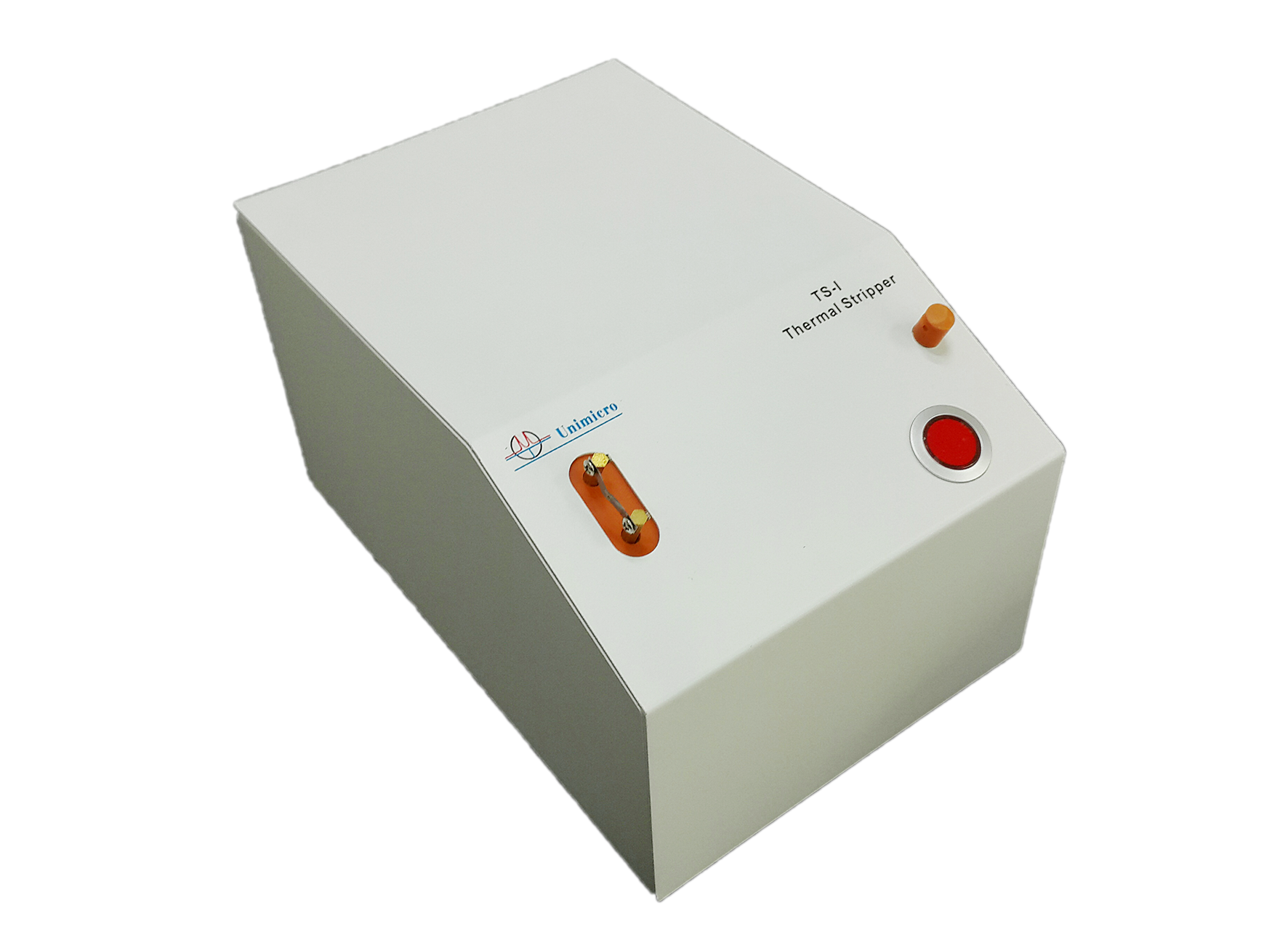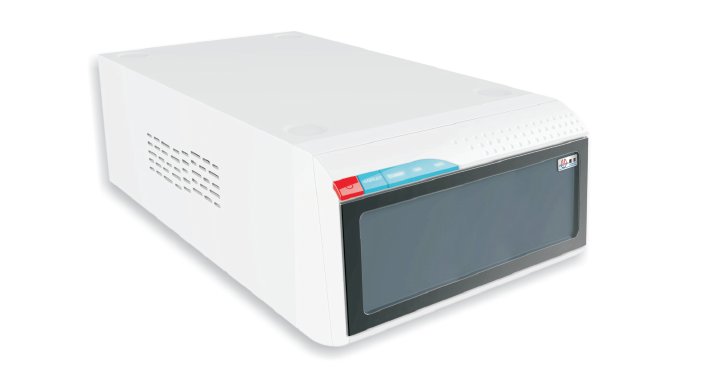The mobile phase is driven to pass through the stationary phase by both pressure and EOF and the sample is therefore separated due to the chromatographic partition and electrophoretic mobility. Therefore, ionic and neutral compounds can be separated at the same time
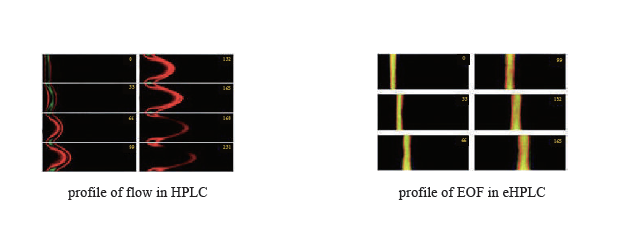
As the exist of electroosmotic flow, there is no worry about the back pressure .Therefore, ultra small particles can be used to get higher efficiency, better peak shape and lager peak capacity. And longer column can be used for better separation. The elcetroosmotic flow helps improve the sample pattern and molecule diffusion in the column, contributing to a far better column efficiency than HPLC.
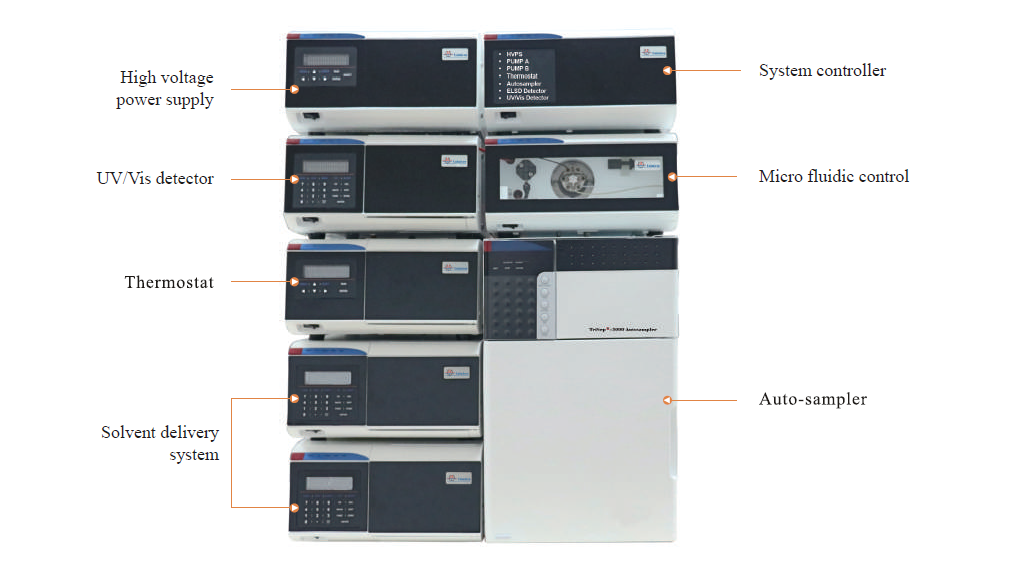
Advantages:
1. Separation of charged and non-charged components at the same time
2. Ultra high efficiency with the use of very small particles
3. Low consumption of solvent and sample
4. Fast speed of separation
5. pCEC,nano-LC and CE,all in one
6. Ready to couple with μUV, μLIF, μECD, μELSD, μMS
solvent delivery system
Item Description Range 1.0 μL/min-10 mL/min Accuracy ±1.0% Precision 0.1% Pressure range 1.0-40 MPa UV/vis detector
Item Description Light source deuterium lamp Wavelength range 190~700 nm Spectral bandwidth 8.0 nm Wavelength accuracy ±1.0 nm Wavelength reproducibility ±0.1 nm Baseline Drift 2.0×10-4 AU/h Baseline noise 5.0×10-6 AU High voltage power
Item Description Voltage range 0~±30 kV Current range 0~±300 μA eHPLC/pCEC can be widely used in proteomics, metabonomics, drug analysis, food safety, environmental protection, university and research institute.
Application 1: Rapid separtion of 16 PAHs by eHPLC/pCEC- LIF
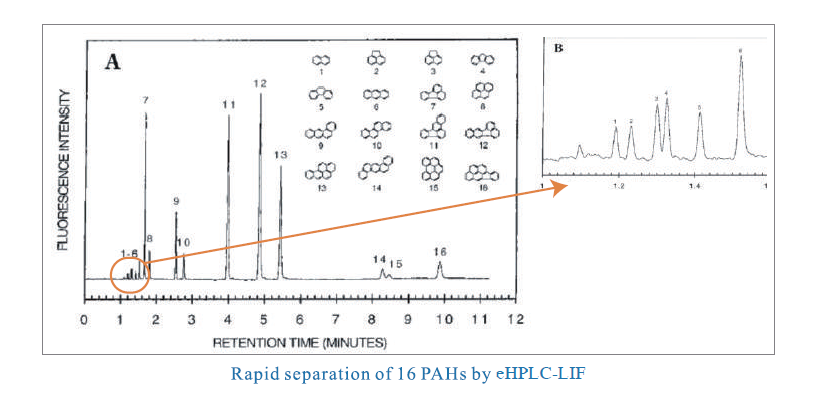
Capilliary column: 100 µm i.d. × 20 cm, 1.5 µm C18
Voltage: 29 kV, Sample: 20 nL
Mobile phase: 65% (v/v) CH3 CN/35% 2 mM TRIS
Detector: LIF, Ex.: 257 nm, Em.: 400 nm
Application 2: Separtion of FITC-labeled Aliphatic Amines by eHPLC/pCEC- LIF
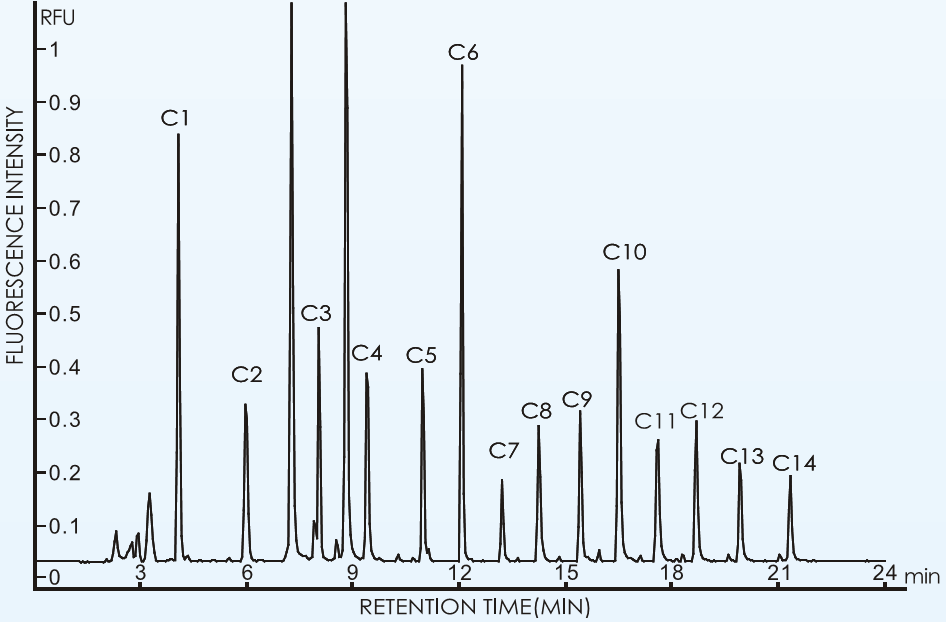
Column: 100 µm i.d. × 20 cm, 3.0µm C18
Mobile phase:
A:10%(v/v) ACN + 10%40 mM PBS+H20
B: 65%(v/v) ACN + 10%40 mM PBS+H20
Pressure: 1500 psi
Power voltage:5 kV
Detector: LIF , Ex.: 473 nm, Em.: 520 nm
Application 3: Separtion of Chinese traditional medicines by eHPLC/pCEC- ELSD
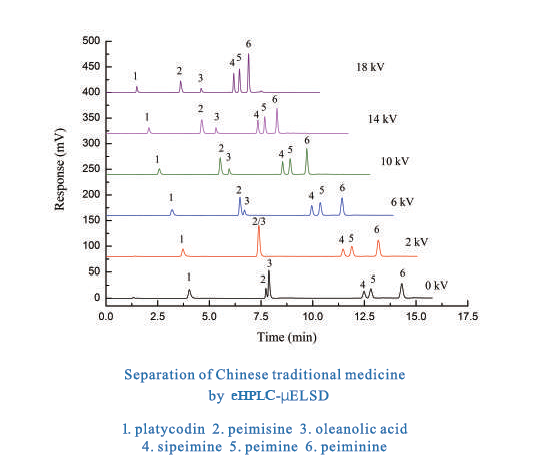
Column: 150 µm i.d. × 15 cm, 3 µm C18
Flow rate: 1.02 µL/min
Mobile phase A: CH3CN
Mobile phase B: 10 mol/L methane acid-triethylamine
Voltage: 10 kV
Sample: 20 nL
Detector: ELSD
Gas flow rate: 0.4 L/min
Evaporative temperature: 40℃
Application 4: Analysis of Microsystin LR and RR by eHPLC-MS
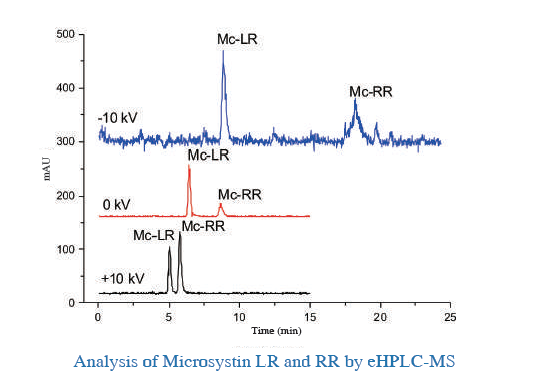
Column: 100 µm i.d. × 25 cm, 1.8 µm C18
Flow rate: 0.1 mL/min
Pressure: 10 Mpa
Sample: 0.01 mg/mL Mc LR and RR
Mobile phase: ACN/H O (V/V=70/30) + 0.1% FA
Detector: MSD
Column temperature: 25℃
Injection volume: 1.0 µL
Voltage: 10 kV
Application 5: Analysis of BSA digest by eHPLC-UV
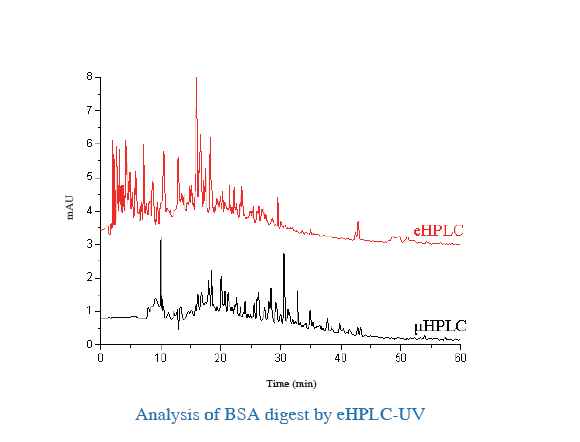
Column: 100 µm i.d. × 25 cm, 1.9 µm C18
Mobile phase A: ACN + 0.1% FA
Mobile phase B: H2O + 0.1% FA
Gradient elution
Flow rate: 0.1 mL/min
Column temperature: 25℃
Detection wavelength: 214 nm
Pressure: 17 MPa
Injection volume: 3.5 nL
Voltage: 15 kV
Product name:eHPLC/pCEC
Product model:TriSep®3000
Product overview
eHPLC/pCEC is designed to combine the advantages of HPLC and CE.
It offers a new solution to separate and analyze complex compounds and the cousumption of samples and solvent is just 1/1000 of conventional HPLC.



-09431835061.jpg)
 Click to enlarge figure
Click to enlarge figure

